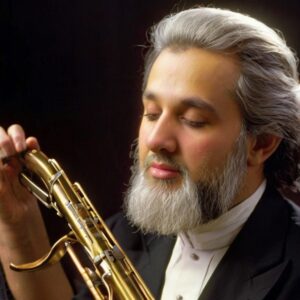It’s impossible to ignore the colossal waves religion has made in its development. From the serene whispers of Gregorian chants to the powerful echoes of sacred oratorios and masses, the imprint of religious themes, texts, and settings on classical music is undeniable and profoundly deep.
The Roots

The journey through the history of Western music begins in the tranquil corridors of medieval monasteries, where the resonant sounds of Gregorian chants first echoed. Named in honor of Pope Gregory I, known for his role in their systematization, these chants represent not just some of the earliest pieces of music that have endured through the centuries, but they are also the cornerstone upon which the vast edifice of Western classical music was constructed. Envision the serene atmosphere of a monastery, where the pure, unadulterated voices of monks rise in unison, their melodies weaving through the air, unaccompanied by any instrument. This was music stripped down to its most essential form, yet it was deeply complex in its ability to convey spiritual narratives and emotions. It served a dual purpose: to elevate the sacred texts, making them more impactful and memorable, and to make these religious teachings accessible to the congregation regardless of literacy levels. Through these chants, scriptures were not experienced, their messages resonating deeply with those in attendance. This approach to music as a tool for worship and education laid the foundational principles of Western musical tradition, emphasizing the power of melody to move, teach, and transcend. The legacy of Gregorian chants in their haunting beauty or their spiritual significance and their role as the bedrock for the development of complex musical structures and harmony in the centuries that followed. By intertwining music with the sacred, a pathway was forged for music’s evolution into a multifaceted art form, capable of expressing the full spectrum of human experience.
The Evolution
As the timeline of Western music unfolds, we witness a transformation that dramatically enriches the musical tapestry: the birth of polyphony. This evolution from monophony, where a single melodic line dominated, to polyphony, introduced a labyrinth of intertwining melodies, each independent yet harmoniously connected. This musical web marked a significant leap in the complexity and expressiveness of musical compositions. The zenith of this evolution was most beautifully realized in the sacred compositions of Giovanni Pierluigi da Palestrina, an Italian Renaissance composer whose contributions to the Catholic Mass remain unparalleled in their ability to elevate the spiritual experience. Palestrina’s genius lay in his ability to weave multiple lines of music in such a way that they enhanced the liturgical words, rather than overshadowing them, creating a deeply intimate and profound worship experience. His compositions were notes set to religious texts, they were transcendent auditory experiences that seemed to bridge the human with the divine, making the act of worship a more resonant, immersive experience. Palestrina’s mastery in the art of counterpoint—a technique in polyphonic writing—showcased how musical innovation could serve a higher spiritual purpose, enriching the practice of worship and the very soul of religious devotion. Through his work, Palestrina demonstrated that music could be a powerful conduit for the divine, a means through which listeners could feel a closer connection to their faith. This period of musical ingenuity, highlighted by Palestrina’s contributions, underscored the evolving relationship between music, religion, and human emotion, illustrating the profound impact of polyphony on the landscape of Western music.
The Golden Age
Enter the Baroque era, and we’re met with music that’s not just heard but felt. Composers like J.S. Bach and Handel took religious music to new heights. Bach’s “Mass in B minor” and “St. Matthew Passion” are monumental works that go beyond settings of religious texts; they are profound expressions of faith. Bach saw his music as a means to worship, famously dedicating his compositions “Soli Deo Gloria” – To God alone be the glory. Handel’s “Messiah,” perhaps the most famous oratorio to this day, mesmerizes with its “Hallelujah” chorus, moving listeners deeply, irrespective of their beliefs. This era showcases the zenith of how religious themes spurred composers to create music that could elevate, educate, and entertain, all while glorifying the divine.
Beyond the West
The exploration of the relationship between music and religion, while initially centered on Western traditions, is by no means confined to this geographical and cultural boundary. Indeed, the synergy of spirituality and sound transcends borders, manifesting in a myriad of forms that are as diverse as the cultures from which they spring. Across the globe, music serves as a powerful medium for expressing faith, a universal language that speaks to the human soul’s yearning for the divine. In India, for example, the intricate ragas—complex musical frameworks—are not performances but offerings to the gods, each raga with its own mood, time, and season, reflecting the essence of the deity it is dedicated to. These musical offerings are a profound expression of devotion and a critical component of Hindu worship, designed to elevate the spirit of both performer and listener, creating a bridge between the human and the divine.
In the Islamic world, the mesmerizing chants of Sufism, known as qawwali, serve to deepen the spiritual connection of the faithful. The Sufi tradition emphasizes the importance of music as a path to enlightenment and union with the divine. The repetitive cycles of Sufi music, with their hypnotic rhythms and melodies, facilitate a state of spiritual ecstasy, helping devotees to transcend the physical world and connect with a higher reality. This form of musical worship, while different in technique and style from the chants and polyphonies of the West, shares the same core purpose: to uplift, to express the inexpressible facets of faith, and to unify the community of believers.
Throughout the world, from the Buddhist chanting that resonates in the temples of Southeast Asia to the powerful gospel music that animates churches in America, music and religion are inextricably linked. Each tradition contributes a unique voice to the global chorus of sacred music, enriching the tapestry of human expression of the divine. These diverse musical practices, with their varying sounds, instruments, and vocal styles, underscore the universal role of music as a conduit for spiritual experience, a tool for teaching and transmitting religious traditions, and a means for communities to express shared beliefs and values. The global phenomenon of religious music highlights the profound and multifaceted ways in which music and spirituality interact across cultures, emphasizing music’s unparalleled ability to transcend linguistic and cultural barriers, uniting people in their quest for the divine.
